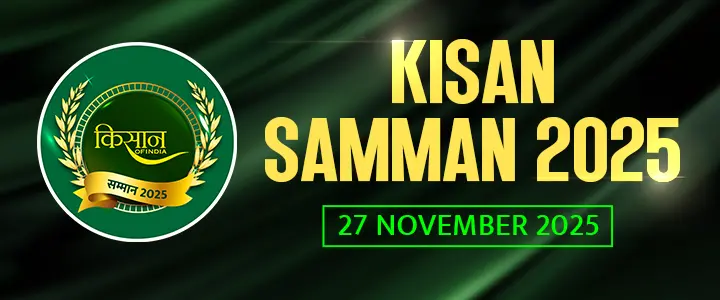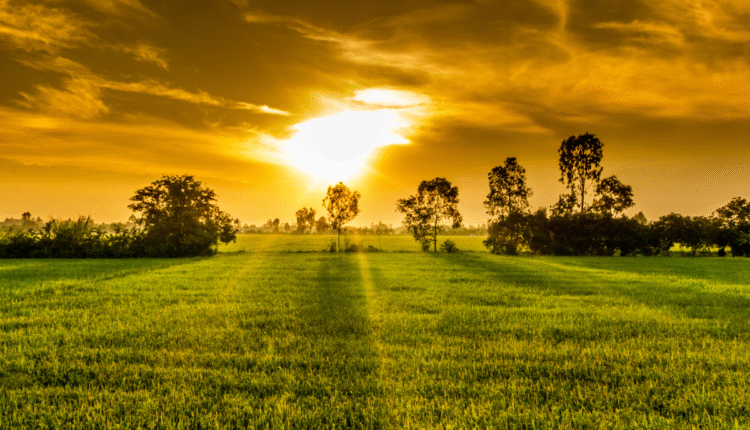Cloud Farming: Capturing Fog and Dew for Irrigation in India’s Drylands
“Paani jahan se mile, wahin se kheti shuru. Ab badalon se bhi.”
(If water can come from the clouds, why not farm with them?)
What is Cloud Farming?
Cloud Farming is not about farming in the clouds. It’s about harvesting invisible water — like fog, mist, and dew — that floats in the air over dry regions.
Just like we harvest rainwater, now technology allows us to harvest atmospheric water—even when there’s no rain.
It’s especially useful in:
• Desert and drought-prone areas
Coastal regions with high humidity
• Hilly terrains where fog is common
Why is it Relevant to Indian Farmers?
India faces water scarcity in many regions:
• Rajasthan, Gujarat, Bundelkhand face recurring droughts
Tamil Nadu, Odisha coastlines see humid but rainless months
• Himalayan and NE hills are often fog-rich but water-deficient
With climate change, monsoons are becoming unpredictable. Farmers can no longer depend solely on rains or groundwater.
Cloud farming can be a lifeline, giving farmers:
• A low-cost water source
A way to grow crops even in dry seasons
• A tool to reduce dependence on groundwater
How Does It Work?
There are two main techniques:
1. Fog Harvesting
• Uses fog nets made of fine mesh
Fog passes through, and tiny water droplets condense on the net
Water drips down into collection tanks
• One square meter of net can collect 5–10 liters/day in good conditions
Used in: Chile’s Atacama Desert, Morocco, Ethiopia — and now being tested in Ladakh and Rajasthan!
2. Dew Harvesting
• At night, temperature drops and dew forms on cool surfaces
• Special condensing sheets or metal roofs collect this dew
Dew is directed into containers or directly to plant roots
Used in: Israel, Iran, and being explored in Kutch and Saurashtra
Indian Case Studies & Pilot Projects
Ladakh – DRDO Initiative
• Fog harvesting nets installed in high-altitude army zones
Used to grow vegetables in water-scarce areas
Farmers are now being trained to replicate the model
Rajasthan – NGO Projects
NGOs like Tarun Bharat Sangh and Barefoot College have tested dew collectors in desert villages
Helped women farmers grow vegetables even in dry months
Gujarat – Kutch Coastal Villages
Coastal fog nets help collect brackish fog water
• Used for irrigating date palms and fodder crops
Benefits for Farmers
| Alternative Water | Access to clean water without borewells or tankers |
| Off-season Farming | Grow vegetables and short-term crops year-round |
| Women Empowerment | Lightweight systems usable by women farmers too |
| Low Maintenance | Once installed, needs minimal upkeep |
| Environment Friendly | No electricity or chemicals required |
How Much Does It Cost?
| System | Approx. Cost | Water Output |
| Fog Net (25 sq.m.) | ₹15,000–₹25,000 | 150–300 liters/day |
| Dew Condenser (roof panel) | ₹2,000–₹5,000 | 5–10 liters/night |
- Can be locally fabricated using bamboo, nylon mesh, or metal sheets
- NGOs and CSR programs can help with funding in tribal or dry zones
Best Crops for Cloud Farming Water
• Leafy vegetables (palak, methi, coriander)
• Flowers (marigold, jasmine)
Fodder grass
Herbal plants (tulsi, ashwagandha)
Short-term pulses
Not meant for full-scale wheat or sugarcane irrigation — but ideal for kitchen gardens, seedlings, nurseries, and supplementing drip irrigation
What Should Farmers Do Now?
1. Observe local conditions: Do you get fog or dew regularly? Especially in winter or mornings?
2. Start small: Try 1-2 nets or a dew collection sheet on your roof.
3. Contact experts or NGOs: Many eco-startups and Krishi Vigyan Kendras are exploring this.
4. Collaborate with others: A shared fog net system can help 3–4 farmers in a village.
The Future: From Desert to Oasis
With smart planning, cloud farming can turn parts of India’s drylands into green belts.
It’s not a replacement for rain — but a supplementary strategy in a water-stressed world.
As climate patterns shift, it’s time for Indian farmers to look above the fields — into the air — for their next drop of water.
Step-by-Step Guide: How to Start Cloud Farming on Your Farm
A. Fog Harvesting System
What You Need:
• Fog nets or mesh: UV-resistant plastic or nylon mesh (shade net type)
Support structure: Bamboo, metal, or PVC poles (at least 2.5 meters tall)
Collection trough or gutter: To collect water from the net
• Storage tank or barrel
How to Set It Up ?
1. Select a location:
Choose an open, high-altitude or windy area where fog passes through (hill slopes, ridge areas, or coastal ridges).
2. Install vertical nets:
Fix the mesh perpendicular to the wind direction, so that fog hits the net directly.
3. Attach gutters at the bottom:
Use PVC or tin gutters to catch the water dripping from the net into a container.
4. Connect to a tank:
Lead the water into a clean storage drum or tank. You can use this water for irrigation.
5. Secure it well:
Tie the poles and net tightly to avoid damage from strong winds.
Tips:
• You can start with a net of 1 meter x 10 meters
Clean the net weekly to remove dust or insects
• Avoid placing under trees or shaded areas
B. Dew Collection System
What You Need:
• Condensation surface: Smooth metal sheets, aluminum panels, or special dew-collecting plastic sheets
• Sloped platform or rooftop area
Collection pipe or groove
• Small water tank or jug
How to Set It Up ?
1. Choose a night-open area:
Place the sheet in an open space where night sky is visible — no tree cover.
2. Keep the sheet slanted:
Tilt the surface slightly (15–30° angle), so that water droplets can run down easily.
3. Add a groove or pipe at the bottom:
Collect water using a small pipe, channel it into a pot or tank.
4. Use early morning water:
Dew usually collects between 2 AM – 6 AM. Harvest and use it early.
Tips:
• Dew harvesting works best in humid nights with clear skies
• You can combine this with rooftop condensation if you have a metal-roof shed or house
DIY Low-Cost Option (for Small Farmers)
| Material | Use |
| Old fishing net or shade net | Fog net |
| Bamboo or wooden sticks | Support frame |
| Steel/aluminum plate or car windshield | Dew surface |
| Plastic pipe | Water gutter |
| Drum or earthen pot | Storage |
Need Help?
Farmers can contact:
• Krishi Vigyan Kendras (KVKs) in your district
ICAR Dryland Research Centres (like in Hyderabad, Jodhpur)
NGOs working on water conservation (e.g., Arid Communities and Technologies in Kutch)
• State Agriculture Universities or CSIR labs
Contact details: If farmers want to share information or experiences related to farming with us, then they can do this by calling us on the phone number 9599273766 or by writing an email to [email protected] or by sending your recording. Through Kisan of India, we will convey your message to the people, because we believe that if the farmers are advanced then the country is happy.



